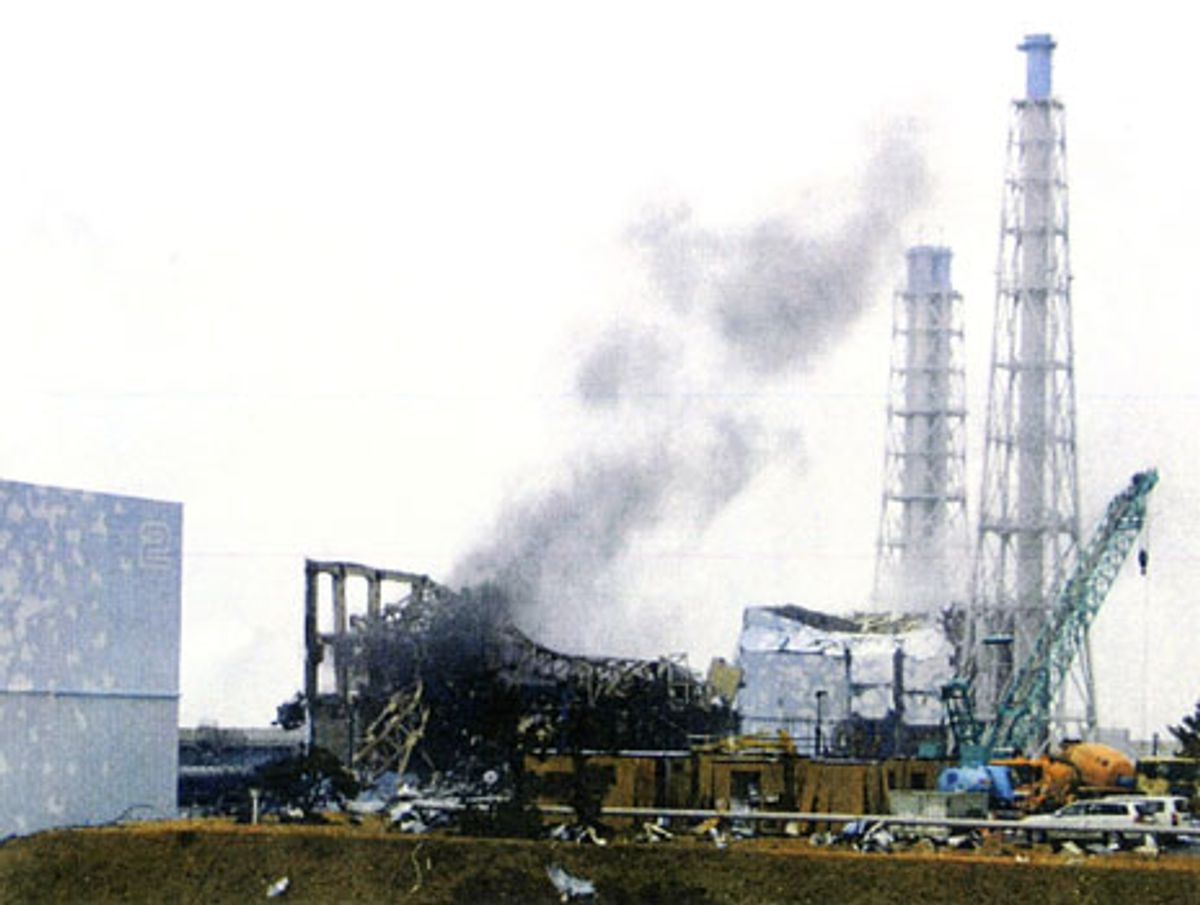Editor's Note: John Boyd is an IEEE Spectrum contributor reporting from Kawasaki, Japan. This is part of IEEE Spectrum's ongoing coverage of Japan's earthquake and nuclear emergency. For more details on how Fukushima Dai-1's nuclear reactors work and what has gone wrong so far, see our explainer and our timeline.
With Japan returning to work on Tuesday after a three-day weekend, rolling power cuts were set to resume. They had been suspended over the holiday, because factories were closed so demand was low.
But workers at the damaged Fukushima Dai-1 Nuclear Plant had no long weekend. Water pumping operations and electrical repair work there resumed after personnel had withdrawn yesterday afternoon when black and gray smoke erupted from the No. 3 reactor building, and white steam was seen coming from the No. 2 reactor building. Work began again at No.3, when the smoke turned white and decreased, said Hidehiko Nishiyama, deputy director general of the Nuclear and Industrial Safety Agency (NISA) at a Tuesday morning press conference.
In a separate press conference Defense Minister Toshimi Kitazawa said that experts thought the black smoke that halted work Monday could have been caused by overheated oil. Kazuaki Matsui, executive director of the Institute of Applied Energy (IAE), an independent research organization in Tokyo, told IEEE Spectrum that “there was no way I can think of that you can produce black smoke from the spent fuel rods. So I agree that it must have been something else, lubricant or filters maybe.”
Later Tuesday, NISA’s Nishiyama said power was ready to be turned on at the No. 3 and No. 4 reactors, and that electricity could now be supplied to all six reactors. But before switching the power on, equipment and instruments were first being checked and tested.
The news about the No. 2 reactor, which suffered an explosion on 16 March, was initially not as good. A TEPCO official told reporters that restoring cooling water pumping to the No. 2 reactor “would take a lot of work,” and it had many workers involved with the operation. However, late Tuesday the company said it hoped to supply power to some equipment in the No. 2 and No. 4 reactors that day.
Other TEPCO crews were working to supply power to the central control rooms that operate reactors Nos. 1 to No. 4. With these in operation, engineers will then be able to gauge temperatures inside the reactor cores and spent fuel storage pools and supply lighting and air conditioning, which will make further repair work easier.
IAE's Matsui said he had no doubt that the repair crews were working hard to install cables and fix pumps and instruments and he also understood that they faced tough conditions working with high radiation levels. “But we still need them to speed up the work,” he said.
The TEPCO crews are being aided by engineers from Toshiba Corp., a major supplier of power systems, including five of the six nuclear reactors used in the Dai-1 Plant (Nos. 1, 2, 3, 5 and 6). The company says it has a task force of 700 engineers working around the clock to help stabilize the plant. Though most of the engineers are stationed in its Isogo Nuclear Engineering Center in Yokohama and other facilities, it has sent 100 engineers to both the Dai-1 and the nearby Dai-2 plants to provide more direct support and resources.
The International Atomic Energy Agency is also working with the Japanese. Agency Director General Yukiya Amano met with the agency’s Board of Governors in Vienna Monday to discuss the Dai-1 plant crisis. He said measures the organization had taken to assist in stabilizing the plant included sending a senior official to Japan to coordinate the agency’s assistance activities with the Japanese authorities and dispatching a radiation monitoring team, which was already “sending back measurements to Vienna, including from locations close to the Fukushima site.” Additional staff will fly out from Vienna shortly to strengthen the team, he said.
Amano said one lesson from the emergency was already clear. “The current international emergency response framework needs to be reassessed. It was designed largely in the wake of the Chernobyl (nuclear) disaster in 1986, before the information revolution,” he said. “It reflects the realities of the 1980s, not of the 21st century.”
He added that, “the situation at Fukushima remains serious, but we are starting to see some positive developments.”




